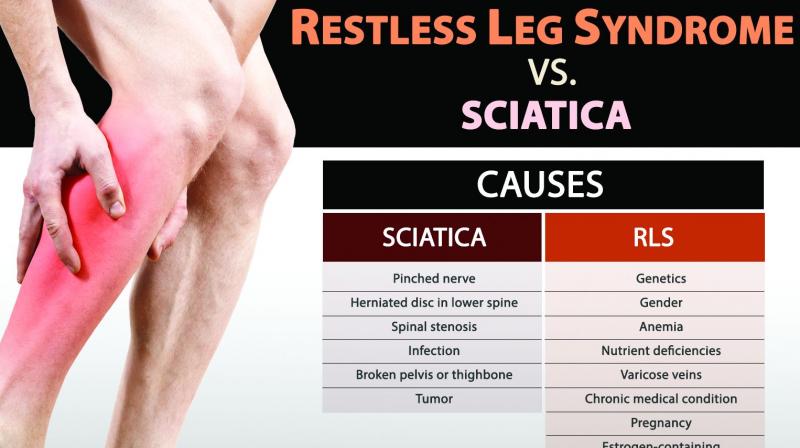Restless leg syndrome linked to heart

Hyderabad: A population study carried out in urban areas in south India has revealed that Restless Leg Syndrome (RLS) is linked to an increased risk of heart disease. The incidence of the condition has been found to be higher among women and elderly persons.
1,500 subjects were screened as part of the study and their risk of developing cardiovascular diseases was evaluated. The study was published in the Journal of Neurology.
Dr Rama Krishna, a senior neurosurgeon, says, “The symptoms of RLS include pulling, tingling and pain in the legs; but the condition stems from the brain. There is no specific test for RLS. It is identified solely on the basis of the doctor’s evaluation when a patient complains of abnormal or unpleasant pain and the inability to move his legs in the evenings, late at night, or early in the morning.”
These symptoms of RLS are usually felt when a person is asleep. Patients often wake up with a tingling feeling or painful sensations in the legs. RLS is also characterised as a sleep disorder; patients may be unable to sleep at night due to sensations in their legs, hands and upper body.
RLS may be caused by a deficiency of iron, end-stage kidney failure, nerve damage, the excessive use of alcohol, nicotine or caffeine, or as a reaction to medication such as anti-nausea drugs, antipsychotic drugs, anti-depressants or allergy drugs.
According to the study, middle-aged and elderly women from urban areas, who are not very active, are most likely to suffer from this condition.
Co-morbid conditions include diabetes and obesity. Only one in 50 cases of the Syndrome is diagnosed, and in most cases, the diagnosis happens too late.
The clinical analysis of persons diagnosed with RLS has revealed a higher risk of cardiovascular mortality. Those who are diagnosed too late require more aggressive treatment and they have a higher chance of suffering fatal heart attacks.
Treatment options include the augmentation of iron levels in the body and the implementation of lifestyle changes, apart from medical management.

